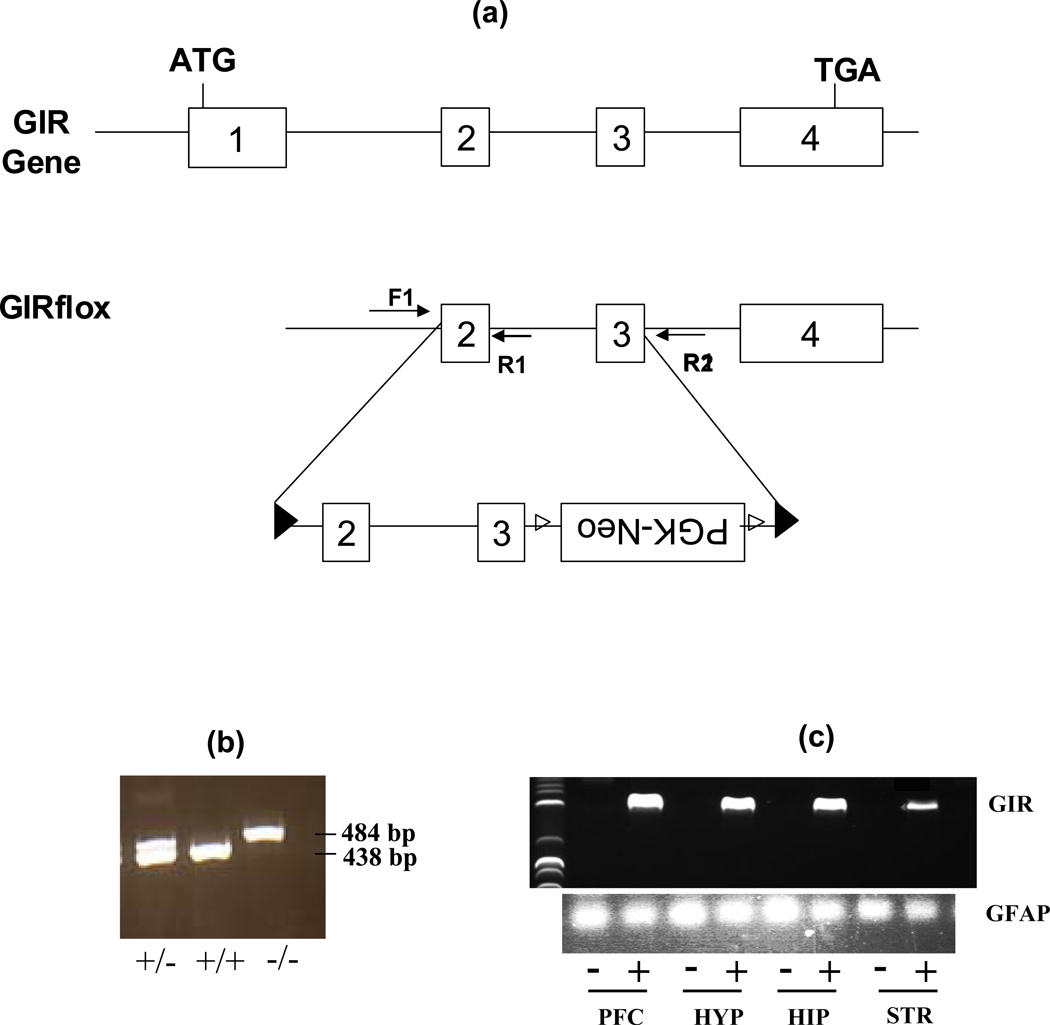Figure 1.
Targeted disruption of the GIR gene in the mouse: (a) Wild-type GIR gene is shown spanning exons 1–4. Lower line shows the transgene used to generate GIR −/− mice with targeted deletion of exons 2 and 3. ; Insertion cassette with position of flox (▶) sites, PGK-neo frt(▷) sites and genotyping primers F1, R1 and R2 is indicated. (b) Primers (F1) and (R1) produced a 438 bp band in the wild type GIR (+/+) and heterozygous (+/−) mice but not in GIR knockout (−/−) mice. Primers (F1) and (R2) produced a 484 bp band in (−/−) and (+/−) mice but a (~2.7kb) product in +/+ mice (not see here). (c) Reverse-transcriptase polymerase chain reaction revealed the absence of GIR message in various forebrain regions of (−/−) mice as compared to (+/+) mice. Lower panel shows Glial fibrillary acidic protein (GFAP) as loading control. PFC=prefrontal cortex, HYP=hypothalamus, HIP=hippocampus, STR=striatum.

